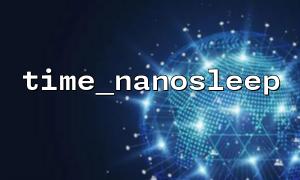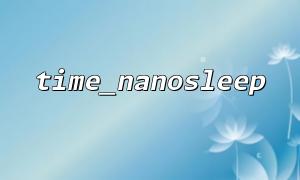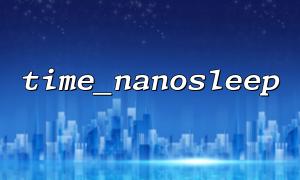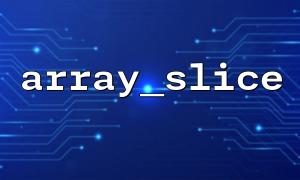In PHP programming, processing time and delay are important components of many application scenarios. Especially for time-sensitive programs, such as real-time data acquisition, precise task scheduling, animation control, etc., precise control of delay time is particularly critical. PHP provides multiple time control functions, time_nanosleep is one of the relatively fine tools. This article will focus on the specific advantages of the time_nanosleep function and its practical scenarios in time-sensitive PHP applications.
time_nanosleep is a built-in delay function in PHP, and its prototype is as follows:
bool time_nanosleep(int $seconds, int $nanoseconds)
This function causes the program to pause the execution of the specified number of seconds and nanoseconds. The number of seconds is an integer, and the number of nanoseconds is an integer between 0 and 999,999,999. Compared with sleep() that can only pause the second level, usleep() can only pause the microsecond level. time_nanosleep supports nanosecond level delay, making time control more accurate.
time_nanosleep supports nanosecond (10^-9 seconds)-level delays, and compared to traditional sleep() and usleep() , it can achieve finer granular time control. This is very helpful for applications that require strict time control.
In scenarios where certain tasks need to be executed regularly, using time_nanosleep can effectively reduce the CPU usage of the program. Compared to using busy-wait method, nanosecond sleep can allow the CPU to enter an idle state and save system resources.
If time_nanosleep is interrupted by a signal during execution, it will return to the interrupt state and return the remaining time. This way, developers can choose whether to continue to sleep or take other measures according to their needs, which enhances the robustness of the program.
$remaining = null;
$result = time_nanosleep(1, 500000000); // Sleep 1.5 Second
if ($result === false) {
echo "sleep Being interrupted,time left:" . print_r($remaining, true);
}
In real-time systems, such as sensor data acquisition, data needs to be collected at precise time intervals. time_nanosleep can help developers achieve millisecond or even nanosecond sampling frequency to avoid data loss or sampling time drift.
For applications that require high-precision timed execution, such as game development, animation control, audio processing, etc., that require high-precision timed execution, using time_nanosleep can ensure the accuracy of task intervals, ensuring fluency and synchronization.
When you need to continuously perform tasks but cannot occupy too much CPU, such as polling services, long connection detection, etc., time_nanosleep can reasonably control the execution frequency to avoid waste of resources caused by busy waiting.
When testing environments or simulating complex latency conditions, time_nanosleep can simulate more delicate latency and provide precise time control for development and debugging.
<?php
// 每Second执行一次任务,And precisely control delay
while (true) {
// Task Code
echo "Time to execute tasks:" . microtime(true) . PHP_EOL;
// Accurate sleep1.2Second
if (!time_nanosleep(1, 200000000)) {
echo "sleepBeing interrupted,Try to continue sleeping\n";
}
}
In this example, the program waits for 1.2 seconds each time it cycles, and can respond to signal interrupts to improve program stability.
time_nanosleep has become an indispensable tool in PHP time-sensitive applications thanks to its nanosecond-level latency control, low CPU consumption and interruptibility features. Whether it is real-time data collection, precise task scheduling or resource optimization, it can provide delicate and flexible time management capabilities. Rational use of this function will greatly improve the performance and stability of time-sensitive PHP applications.
For further learning of PHP time functions and related examples, you can visit https://gitbox.net/php/time for more details.














